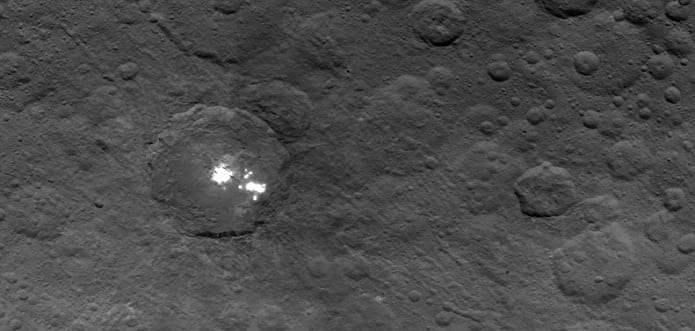The science team is working to understand their source.
This month, Dawn captured the images from its second mapping orbit of Ceres.
This orbit lies about 2,700 miles (4,400 kilometers) above the surface of Ceres.

NASA launched its $473 million Dawn mission in September 2007 to study Ceres and Vesta.
These two are the largest object in the main asteroid belt that lies between Mars and Jupiter.
Ceres and Vesta fall into the category of dwarf planet as well as asteroid.

NASA officials also confirm that Dawn will continue orbiting Ceres through June 2016.
So any mechanism for producing the bright spots seems to be complicated.
I am not expecting a trivial solution to this conundrum.
source: www.techworm.net